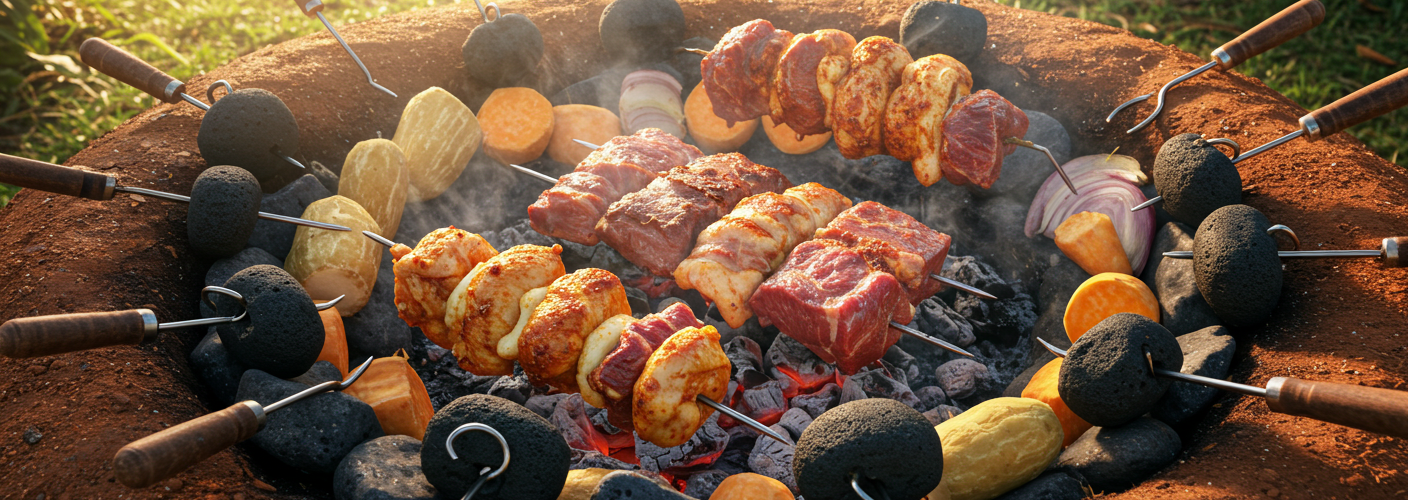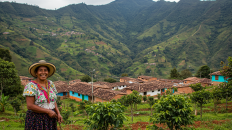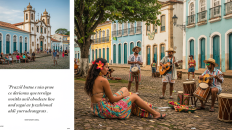Pachamanca, a traditional Peruvian dish that dates back to ancient times, is a unique culinary experience that has been cherished for generations. This remarkable cooking method, which translates to “earth pot,” involves placing marinated meats and vegetables in a pit lined with hot stones, creating a flavor-packed meal that’s both rustic and meaningful.
The origins of Pachamanca can be traced to the Andean cultures of Peru where, in a celebration of the earth and agriculture, communities would gather to cook and feast on this communal dish. The process is deeply rooted in the concept of Pachamama, the Andean goddess of earth and fertility, showcasing the profound respect for nature and the land inherent in Andean culture.
The Cooking Process
The preparation of Pachamanca is not just about the food; it’s a social event that brings people together. The cooking ritual begins with digging a pit in the ground, which is lined with heated stones. These stones are heated by a fire built in the pit; once they reach the right temperature, they are carefully placed around the marinated meats and vegetables.
The meats traditionally used include lamb, pork, chicken, or even guinea pig—an Andean staple. They are typically marinated with local seasonings, such as garlic, cumin, and herbs, lending depth and richness to the final dish. Layers of potatoes, corn, and other seasonal vegetables are added for a complete meal.
Once the pit is filled with the marinated ingredients, it is covered with banana leaves, and the earth is packed back in to trap the steam and flavors. Cooking time varies, but generally, Pachamanca is left to cook for several hours, allowing the flavors to meld beautifully. After the cooking is complete, the earth is carefully removed to reveal a steaming feast, fragrant with the scent of herbs and roasted meats.
The Cultural Experience
More than just a cooking technique, Pachamanca is about community and celebration. It is often prepared during festivals, family gatherings, or special occasions. Participating in a Pachamanca feast is an immersive experience, as it involves everyone coming together, working as a team to prepare and then enjoying the meal collectively.
For those who wish to experience Pachamanca firsthand, many restaurants and culinary tours in Peru offer the chance to participate in this time-honored tradition. Visitors can enjoy the experience of choosing their ingredients, helping with the preparation, and, of course, savoring the delicious results.
The Gastronomic Appeal
Pachamanca is not only about taste; it’s also about the unique cooking process that infuses the meat with a smoky flavor from the earth and stones. The interaction of steam and heat ensures that the ingredients retain their natural juices, resulting in tender and flavorful meat that melts in your mouth. The blend of traditional Peruvian ingredients creates a symphony of flavors that reflect the richness of the land.
In recent years, Pachamanca has gained popularity outside Peru, intriguing food enthusiasts around the world. It exemplifies the growing interest in traditional cooking methods that connect people to their heritage and the environment, showcasing the importance of sustainable practices and fresh, local ingredients.
Conclusion
Pachamanca stands as a testament to the rich culinary traditions of Peru, offering a unique glimpse into the culture, history, and community bonding of the Andean people. Whether you’re experiencing it at a local gathering in Peru or trying to recreate the dish at home, Pachamanca invites everyone to appreciate the flavors of the earth and the joy of sharing a meal together. This culinary journey is one you won’t want to miss.




Add comment